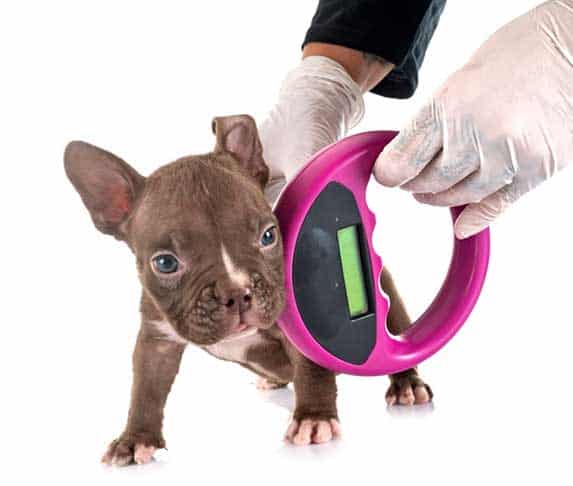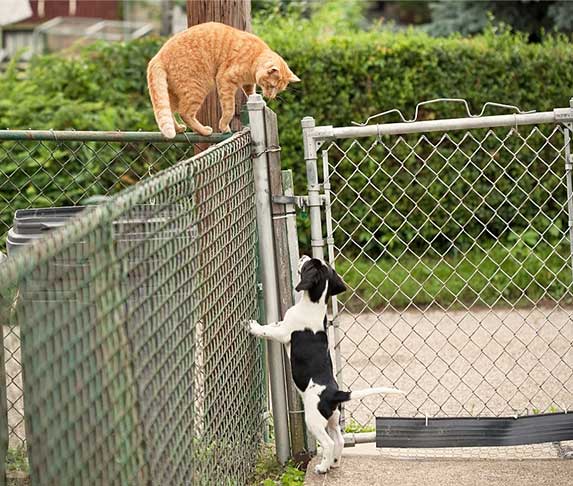You may be at an adoption center and as you scan through the dogs who are looking for a new home, one of them caught your attention.
Then, You have this feeling inside of you that this is the dog for you and that you want to take this furry friend home.
You are ready and are about to go home with a new friend, but the volunteer at the center tells you something – this dog is deaf.
Before you change your mind, you need to know that taking care of a deaf dog is as easy as taking care of a normal dog. You also just need to make some bit of extra measures to keep track of them, such as installing microchips, tags, and more.
However, for these deaf dogs, it is simply living life as usual.
Deaf dogs deserve your love and care just like hearing dogs do.
So in today’s article, we will be sharing with you different ways how you can take care and keep track of a deaf dog.
Owning a dog entails a lot of responsibility whether your dog can hear you clearly or not.
However, deaf dogs would require an extra level of care and attention.
Keeping them safe should be your utmost priority.
You are the only one they rely on and you serve as the “ears” in their silent world.
11 Things to Help You Keep Track of Your Deaf Dog
Here are 11 things you can do to keep your deaf dog safe:
1. Microchip

This is great advice for any pet owner, but especially so for those who own a deaf dog.
Some microchip companies allow the owners to note their pet’s medical needs in his or her profile.
Noting that your dog is deaf would be very helpful when the time comes.
And if someone tracks your dog, they would immediately know how they should take care of your furry friend because they will be informed beforehand of your dog’s condition.
2. Tags
Aside from putting their name on their collars or tags, you can also add the short sentence “I’m deaf”.
So that when your dog runs away and a stranger sees them, they would know how they should approach your dog because they will have an idea beforehand that your dog is deaf.
For instance, you can put “Brownie, I’m deaf” on their tags and it would also be better if it would be engraved on both sides.
3. Vests or Doodie Packs
You can have your dog wear vests that indicate they are deaf.
You can have a customized vest made for them or you can purchase one online.
These vests surely come in different sizes, colors, and styles, and there will surely be one that will fit your dog’s personality!
Remember that it is important for other people to know that your dog is deaf.
So that they can be informed beforehand that they cannot immediately approach your dog or give them a hug as they may end up getting startled which may lead to unwanted results.
4. Harness, Collars, and Leash
Just like hearing dogs, it would be safe for deaf dogs if they will be wearing a harness or leash whenever they are going outside.
Remember: tags always go on the collar and not a harness.
However, it is recommended that an owner use a harness because dogs can pull themselves out of a collar.
A properly fitting harness is more secure and is more comfortable for your furry friend.
The pressure is taken away from their neck and trachea and is distributed evenly throughout their body.
To add an extra layer of safety, you can also opt for a reflective harness, especially when you like going out on late-night walks.
You can also add “I’m deaf” to your dog’s leash, harness, and collar.
Doing so makes it clearer to everyone else that your dog has trouble hearing and may need additional help.
Learn More:
5. Using hand signs
Using hand signs is the fastest and best way to teach your dog some commands.
Especially so that they cannot hear you.
You can teach your furry friend the most basic signs first like “no,” “stay,” “sit,” “drop it,” “go over there,” “it’s time for a snack,” and “it’s time for a walk.”
You can also teach these signs to the people who your dog sees most of the time.
So that if the time comes and you ask them to keep an eye on your pet, they will know what to do.
6. Training
Consistent training is important for your deaf dog to develop discipline and so that they can follow your commands without getting confused.
However, you must remember to be patient and loving all throughout the process and understand that your dog is struggling but is trying his very best to make you happy.
7. Always lock your door
It is very important for you to keep your doors always locked so that your deaf dog will not go wandering outside without anyone to keep an eye on them.
Remember that there are many strangers outside, passing cars, and other dangers that are lurking around.
And your dog has no means of knowing this until the danger can no longer be evaded.
Even if you will only get your keys from the sink, lock your door.
Even if you will only turn off the light switch, lock your door.
8. Be aware
Whenever you are out in public with your dog, you must be aware of your surroundings.
Look around for cars or for children who might suddenly jump at your dog to hug them.
This may end up startling your dog and in turn, may cause a huge problem.
Communicate the things happening around you to your dog and help them understand these kinds of things in the best way you can.
9. Support group and other helpful resources
There are many available resources for deaf dog owners.
For instance, there are blogs online which you can access for free in which some deaf dog owners share what strategies work best for them, what products they buy their dogs, and how they train and communicate with their furry best friends.
You can also join a support group online and share inspirational and motivational stories with other deaf dog owners.
Owning a hearing-impaired dog may be a bit complicated, but your efforts surely mean the world to your pets.
10. Put a fence in your yard

This is very important because your dog might not be able to notice that he is already very far from home and may find it difficult to find his way back.
It is also advisable to put a collar with a bell on your dog so that you would know his whereabouts, especially when you let him play in your yard.
11. Eliminate hazardous materials
Finally, is eliminating hazardous materials in your home.
This includes some items which may be appealing to your dog but is harmful to them.
Make sure to keep chemicals and foods that are toxic to them away from their reach.
Key Takeaway
On a final note, having a deaf dog may require extra care and attention, but it is not at all burdensome or “impossible” to do.
They need your love and support more than ever.
As a pet owner, you must do your best not to fail them.
See Also


